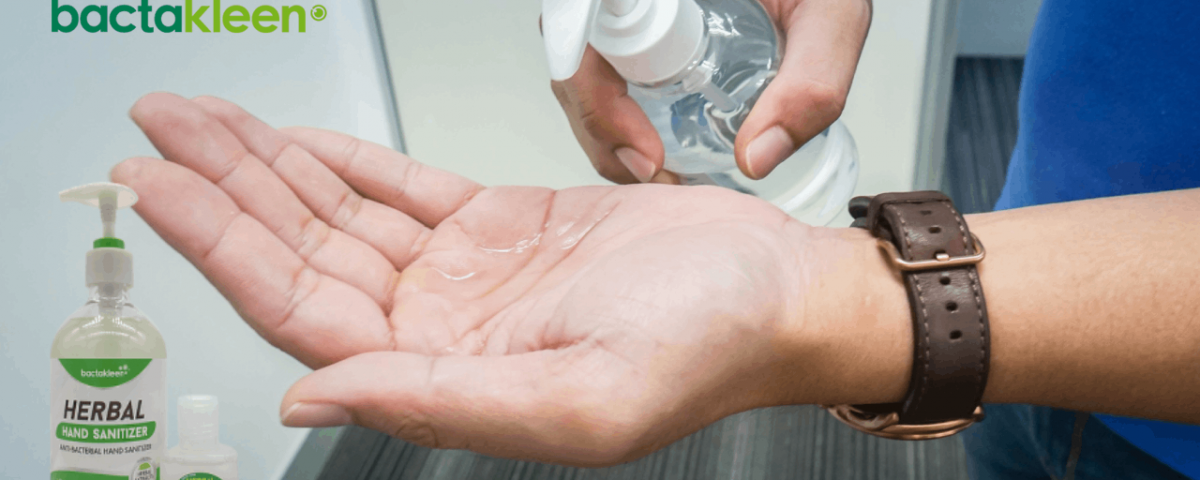- World's No.1 selling Anti Bacterial Treatment System!
- +971 56 3304466
- +971 55 9676070
- info@bactakleen.ae
Why is 70% Alcohol Better Than 95%?

What Alcohol is Best for Disinfection?
December 17, 2020
What Is the Difference Between Disinfection and Sterilization?
December 27, 2020Worldwide, one out of every four individuals stands the risk of acquiring infections. At worse, in developing countries, approximately 4,384 deaths are reported among children. The availability of alcohol-based sanitizers is significant in promoting compliance and effective hand hygiene practice. Since the beginning of the coronavirus pandemic, factors including inconvenient running water facilities made sanitizers man’s best friend.
According to the World Health Organization, hand rubs have become the standard handwashing method. Perhaps that’s because of its ability to protect against the virus. And it comes with a portable bottle that can quickly and with convenience be carried with an individual anywhere. Even though sanitizers are classified as low-level disinfectants, they have some advantages that other disinfectants don’t. Here is a comparison of the efficacy of 70% alcohol hand rub better than 95% in handwashing and disinfection
Why is 70% considered to be better than 95% alcohol in a concentration?
Sometimes disinfectants can require you to give them up to 10 minutes before eliminating harmful microorganisms. Lagaya-Aranas (2016) stated that sanitizers work almost instantly to kill germs and viruses upon contact. And it’s more accessible than a sink since you can carry it with you everywhere, so you don’t have to worry about washing your hands when in public places.
The active ingredient that a regular sanitizer uses to eliminate germs and viruses is alcohol unless it’s a non-alcohol based hand sanitizer. The active ingredient used is benzalkonium chloride.
So you may ask if alcohol is the main ingredient that kills germs and viruses, how come a large percentage of it in a concentration is not as effective as a lower percentage? Shouldn’t it perform better based on its mass? Well, it’s essential to understand why less is more in terms of efficacy. Singh et al. (2020) pointed out that a high concentration such as 95% can harm pathogenic microorganisms you are targeting but not kill them when applied on a surface. If you are asking how, here is the answer: it causes an external injury that forms a protective wall and shields these microorganisms from sudden death.
Water plays a significant role in eliminating pathogenic microorganisms. It acts as a catalyst and facilitates the denaturation of proteins of vegetative cell membranes. That means a solution penetrates the membranes and then coagulates the proteins and kills the microorganism. Besides that, the alcohol evaporates quickly. Shadid et al. (2019) noted that if a sanitizer has an intense concentration of alcohol with less water, it can evaporate before it reaches its dwell time and kills the microorganisms. But with the aid of water, it can take a little longer to evaporate, therefore getting its dwell time and eliminating pathogenic microorganisms virtually.
Can alcohol disinfectants kill all types of pathogenic microorganisms?
Alcohol is a powerful weapon against many microorganisms, but unfortunately, not all of them, so the answer is no. A solution that contains 60% alcohol and above can kill viruses with envelope structures like coronavirus. Still, there are other structures of viruses that it can’t kill, no matter what concentration of alcohol you use. An example of virus alcohol can’t kill norovirus, but norovirus can be destroyed by bleach. Kampf (2018) mentioned that it’s always essential to understand the type of virus you’re dealing with in your environment to use the right disinfection product and method. That can help prevent the false sense of security and keep you safe from getting infected.
Hand hygiene through washing hands using water and soap or alcohol-based sanitizers form the primary preventive practices and measures against spreading infections. Alcohol-based agents dissolve membranes and denature proteins, and so disrupts the virus and inhibit metabolism. However, the alcohol concentration in these hand-cleansing products, including product formulation, volume used, degree of soiling, and contact time, affects its efficacy against infections.
It’s essential to check the sanitizer carefully you’re about to purchase to ensure that the percentage of alcohol it contains is 60% and above.




